[삼겹살]Three Of The Biggest Catastrophes In Workers Compensation Attorney The…
4
2023.02.25 01:29
짧은주소
본문
Workers Compensation Legal - What You Need to Know
If you've been injured at the workplace, at home or on the highway A legal professional can assist you to determine if there is a claim and how to proceed with it. A lawyer can also assist you to obtain the maximum amount of compensation for your claim.
The law on minimum wage is not relevant in determining whether an employee is a worker
No matter if you are an experienced attorney or a novice your knowledge of how to run your business is a bit limited. Your contract with your boss is the ideal starting point. After you have sorted out the details you must consider the following: What type of compensation would be best for your employees? What legal requirements have to be fulfilled? What can you do to deal with employee turnover? A solid insurance policy will ensure that you are protected in the event that the worst should happen. In addition, you must determine how to keep your business running like an efficient machine. This can be done by reviewing your work schedule, making sure that your employees wear the appropriate attire and follow the guidelines.
Personal risks that cause injuries are not compensation-able
Generally, the definition of"personal risk" is generally that "personal risk" is one that isn't directly related to employment. Under the Workers Compensation legal doctrine the risk can only be considered to be related to employment in the event that it is related to the scope of work.
A prime example of an employment-related risk is the possibility of becoming the victim of a crime at work. This includes crimes committed by violent people against employees.
The legal term "egg shell" is a fancy word that refers back to a devastating incident that occurs when an employee is in the course of his or her employment. The court ruled that the injury was due to the fall of a person who slipped and fell. The claimant was a corrections officer , and experienced a sharp pain in the left knee as he climbed up the stairs at the facility. The itching was treated by him.
Employer claimed that the injury was unintentional or an idiopathic cause. According to the judge, this is a very difficult burden to meet. Contrary to other risks that are related to employment, the defense against Idiopathic disease requires that there is a clear connection between the activity and the risk.
An employee is considered to be at risk if the injury was unavoidable and was caused by a unique, work-related reason. A workplace injury is considered to be a result of employment if it is sudden, violent, and produces objective symptoms of the injury.
The standard for legal causation has changed significantly over time. For example the Iowa Supreme Court has expanded the legal causation standard to include mental-mental injury or sudden trauma events. In the past, law demanded that the injury of an employee result from a particular risk in the job. This was done to prevent the possibility of a unfair recovery. The court ruled that the idiopathic defense could be construed in favor of inclusion.
The Appellate Division decision shows that the Idiopathic defense can be difficult to prove. This is contrary to the fundamental premise of the workers compensation litigation' compensation legal theory.
An injury sustained at work is considered to be a result of employment only if it is sudden violent, violent, or workers compensation Legal causing objective symptoms. Usually the claim is made according to the law in that time.
Employers could use the defense of negligence to contribute to shield themselves from liability
Workers who suffered injuries on their job did not have recourse against their employers until the end of the nineteenth century. They relied instead on three common law defenses in order to keep themselves from the risk of liability.
One of these defenses, referred to as the "fellow-servant" rule, was used to prevent employees from seeking compensation when they were injured by co-workers. Another defense, the "implied assumption of risk," was used to shield the liability.
Nowadays, the majority of states employ a more equitable method known as comparative negligence , which reduces the plaintiff's recovery. This involves dividing damages according to the extent of fault between the parties. Some states have adopted sole negligence, while other states have altered them.
Depending on the state, injured workers can sue their employer or Workers Compensation Legal case manager to recover damages they suffered. The damages are usually made up of lost wages or other compensations. In cases of wrongful termination the damages are dependent on the plaintiff's lost wages.
Florida law permits workers who are partly at fault for injuries to have a better chance of receiving compensation. Florida adopted the "Grand Bargain" concept to allow injured workers compensation lawsuit who are partially responsible for their injuries to receive compensation.
In the United Kingdom, the doctrine of vicarious liability developed in the year 1700. Priestly v. Fowler was the case in which an injured butcher was unable to claim damages from his employer due to his status as a fellow servant. The law also created an exception for fellow servants in the case that the employer's negligence caused the injury.
The "right-to-die" contract which was widely used by the English industry, also restricted the rights of workers. People who were reform-minded demanded that the workers compensation system change.
While contributory negligence was once a method to avoid the possibility of liability, it's been abandoned by the majority of states. In the majority of instances, the amount of fault will be used to determine the amount of compensation an injured worker is given.
In order to collect the compensation, the person who was injured must prove that their employer was negligent. They can prove this by proving that their employer's intention and the likelihood of injury. They must also show that their employer was the cause of the injury.
Alternatives to workers' compensation
Recent developments in a number of states have allowed employers to opt out of workers' compensation. Oklahoma was the first state to adopt the law in 2013, and other states have also expressed interest. However the law hasn't yet been put into effect. The Oklahoma workers compensation litigation' Compensation Commissioner decided in March that the opt out law violated the state’s equal protection clause.
A group of major companies in Texas as well as several insurance-related companies formed the Association for Responsible Alternatives to Workers' Comp (ARAWC). ARAWC is a non-profit entity that provides a viable alternative to the system of workers' compensation and employers. It is also interested in cost reductions and enhanced benefits for employers. The goal of ARAWC in all states is to work with all stakeholders to create a single, comprehensive measure that can be used by all employers. ARAWC has its headquarters in Washington, D.C., but is currently holding exploratory meeting for Tennessee.
As opposed to traditional workers' comp plans, the plans offered by ARAWC and other similar organizations typically offer less coverage for injuries. They also control access to doctors and require mandatory settlements. Certain plans limit benefits at an earlier age. Moreover, most opt-out plans require employees to report their injuries within 24 hours.
These plans have been adopted by some of the largest employers in Texas and Oklahoma. Cliff Dent, of Dent Truck Lines, says that his company has been able to reduce costs by about 50 percent. Dent said Dent does not intend to go back to traditional workers' comp. He also points out that the plan doesn't cover injuries that have already occurred.
However the plan doesn't allow employees to sue their employers. It is instead governed by the federal Employee Retirement Income Security Act (ERISA). ERISA requires that these organizations give up some protections for traditional workers compensation litigation' compensation. They must also waive their immunity from lawsuits. In return, they get more flexibility in terms of coverage.
The Employee Retirement Income Security Act is responsible for making sure that opt-out worker's comp plans are regulated as welfare benefit plans. They are guided by a set guidelines that guarantee proper reporting. Additionally, many require employees to notify their employers of their injuries prior to the end of their shift.
If you've been injured at the workplace, at home or on the highway A legal professional can assist you to determine if there is a claim and how to proceed with it. A lawyer can also assist you to obtain the maximum amount of compensation for your claim.
The law on minimum wage is not relevant in determining whether an employee is a worker
No matter if you are an experienced attorney or a novice your knowledge of how to run your business is a bit limited. Your contract with your boss is the ideal starting point. After you have sorted out the details you must consider the following: What type of compensation would be best for your employees? What legal requirements have to be fulfilled? What can you do to deal with employee turnover? A solid insurance policy will ensure that you are protected in the event that the worst should happen. In addition, you must determine how to keep your business running like an efficient machine. This can be done by reviewing your work schedule, making sure that your employees wear the appropriate attire and follow the guidelines.
Personal risks that cause injuries are not compensation-able
Generally, the definition of"personal risk" is generally that "personal risk" is one that isn't directly related to employment. Under the Workers Compensation legal doctrine the risk can only be considered to be related to employment in the event that it is related to the scope of work.
A prime example of an employment-related risk is the possibility of becoming the victim of a crime at work. This includes crimes committed by violent people against employees.
The legal term "egg shell" is a fancy word that refers back to a devastating incident that occurs when an employee is in the course of his or her employment. The court ruled that the injury was due to the fall of a person who slipped and fell. The claimant was a corrections officer , and experienced a sharp pain in the left knee as he climbed up the stairs at the facility. The itching was treated by him.
Employer claimed that the injury was unintentional or an idiopathic cause. According to the judge, this is a very difficult burden to meet. Contrary to other risks that are related to employment, the defense against Idiopathic disease requires that there is a clear connection between the activity and the risk.
An employee is considered to be at risk if the injury was unavoidable and was caused by a unique, work-related reason. A workplace injury is considered to be a result of employment if it is sudden, violent, and produces objective symptoms of the injury.
The standard for legal causation has changed significantly over time. For example the Iowa Supreme Court has expanded the legal causation standard to include mental-mental injury or sudden trauma events. In the past, law demanded that the injury of an employee result from a particular risk in the job. This was done to prevent the possibility of a unfair recovery. The court ruled that the idiopathic defense could be construed in favor of inclusion.
The Appellate Division decision shows that the Idiopathic defense can be difficult to prove. This is contrary to the fundamental premise of the workers compensation litigation' compensation legal theory.
An injury sustained at work is considered to be a result of employment only if it is sudden violent, violent, or workers compensation Legal causing objective symptoms. Usually the claim is made according to the law in that time.
Employers could use the defense of negligence to contribute to shield themselves from liability
Workers who suffered injuries on their job did not have recourse against their employers until the end of the nineteenth century. They relied instead on three common law defenses in order to keep themselves from the risk of liability.
One of these defenses, referred to as the "fellow-servant" rule, was used to prevent employees from seeking compensation when they were injured by co-workers. Another defense, the "implied assumption of risk," was used to shield the liability.
Nowadays, the majority of states employ a more equitable method known as comparative negligence , which reduces the plaintiff's recovery. This involves dividing damages according to the extent of fault between the parties. Some states have adopted sole negligence, while other states have altered them.
Depending on the state, injured workers can sue their employer or Workers Compensation Legal case manager to recover damages they suffered. The damages are usually made up of lost wages or other compensations. In cases of wrongful termination the damages are dependent on the plaintiff's lost wages.
Florida law permits workers who are partly at fault for injuries to have a better chance of receiving compensation. Florida adopted the "Grand Bargain" concept to allow injured workers compensation lawsuit who are partially responsible for their injuries to receive compensation.
In the United Kingdom, the doctrine of vicarious liability developed in the year 1700. Priestly v. Fowler was the case in which an injured butcher was unable to claim damages from his employer due to his status as a fellow servant. The law also created an exception for fellow servants in the case that the employer's negligence caused the injury.
The "right-to-die" contract which was widely used by the English industry, also restricted the rights of workers. People who were reform-minded demanded that the workers compensation system change.
While contributory negligence was once a method to avoid the possibility of liability, it's been abandoned by the majority of states. In the majority of instances, the amount of fault will be used to determine the amount of compensation an injured worker is given.
In order to collect the compensation, the person who was injured must prove that their employer was negligent. They can prove this by proving that their employer's intention and the likelihood of injury. They must also show that their employer was the cause of the injury.
Alternatives to workers' compensation
Recent developments in a number of states have allowed employers to opt out of workers' compensation. Oklahoma was the first state to adopt the law in 2013, and other states have also expressed interest. However the law hasn't yet been put into effect. The Oklahoma workers compensation litigation' Compensation Commissioner decided in March that the opt out law violated the state’s equal protection clause.
A group of major companies in Texas as well as several insurance-related companies formed the Association for Responsible Alternatives to Workers' Comp (ARAWC). ARAWC is a non-profit entity that provides a viable alternative to the system of workers' compensation and employers. It is also interested in cost reductions and enhanced benefits for employers. The goal of ARAWC in all states is to work with all stakeholders to create a single, comprehensive measure that can be used by all employers. ARAWC has its headquarters in Washington, D.C., but is currently holding exploratory meeting for Tennessee.
As opposed to traditional workers' comp plans, the plans offered by ARAWC and other similar organizations typically offer less coverage for injuries. They also control access to doctors and require mandatory settlements. Certain plans limit benefits at an earlier age. Moreover, most opt-out plans require employees to report their injuries within 24 hours.
These plans have been adopted by some of the largest employers in Texas and Oklahoma. Cliff Dent, of Dent Truck Lines, says that his company has been able to reduce costs by about 50 percent. Dent said Dent does not intend to go back to traditional workers' comp. He also points out that the plan doesn't cover injuries that have already occurred.
However the plan doesn't allow employees to sue their employers. It is instead governed by the federal Employee Retirement Income Security Act (ERISA). ERISA requires that these organizations give up some protections for traditional workers compensation litigation' compensation. They must also waive their immunity from lawsuits. In return, they get more flexibility in terms of coverage.
The Employee Retirement Income Security Act is responsible for making sure that opt-out worker's comp plans are regulated as welfare benefit plans. They are guided by a set guidelines that guarantee proper reporting. Additionally, many require employees to notify their employers of their injuries prior to the end of their shift.






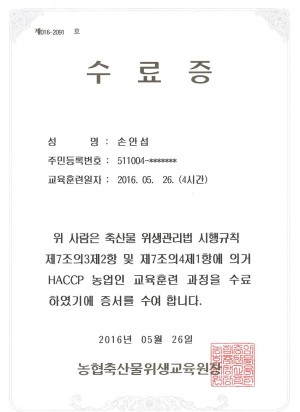
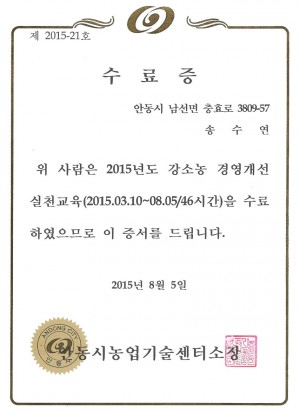
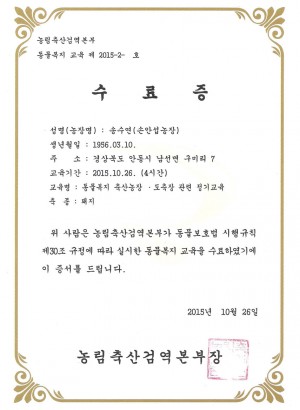
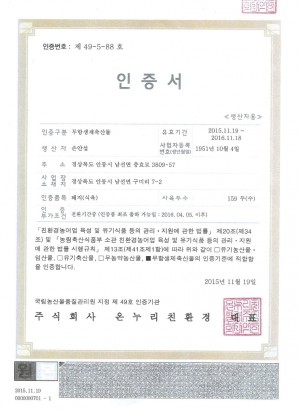



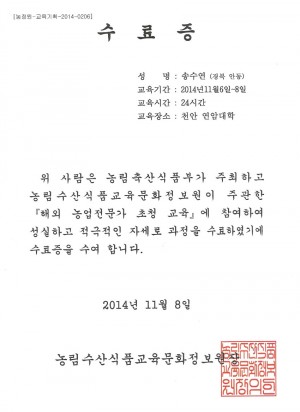

댓글목록
등록된 댓글이 없습니다.